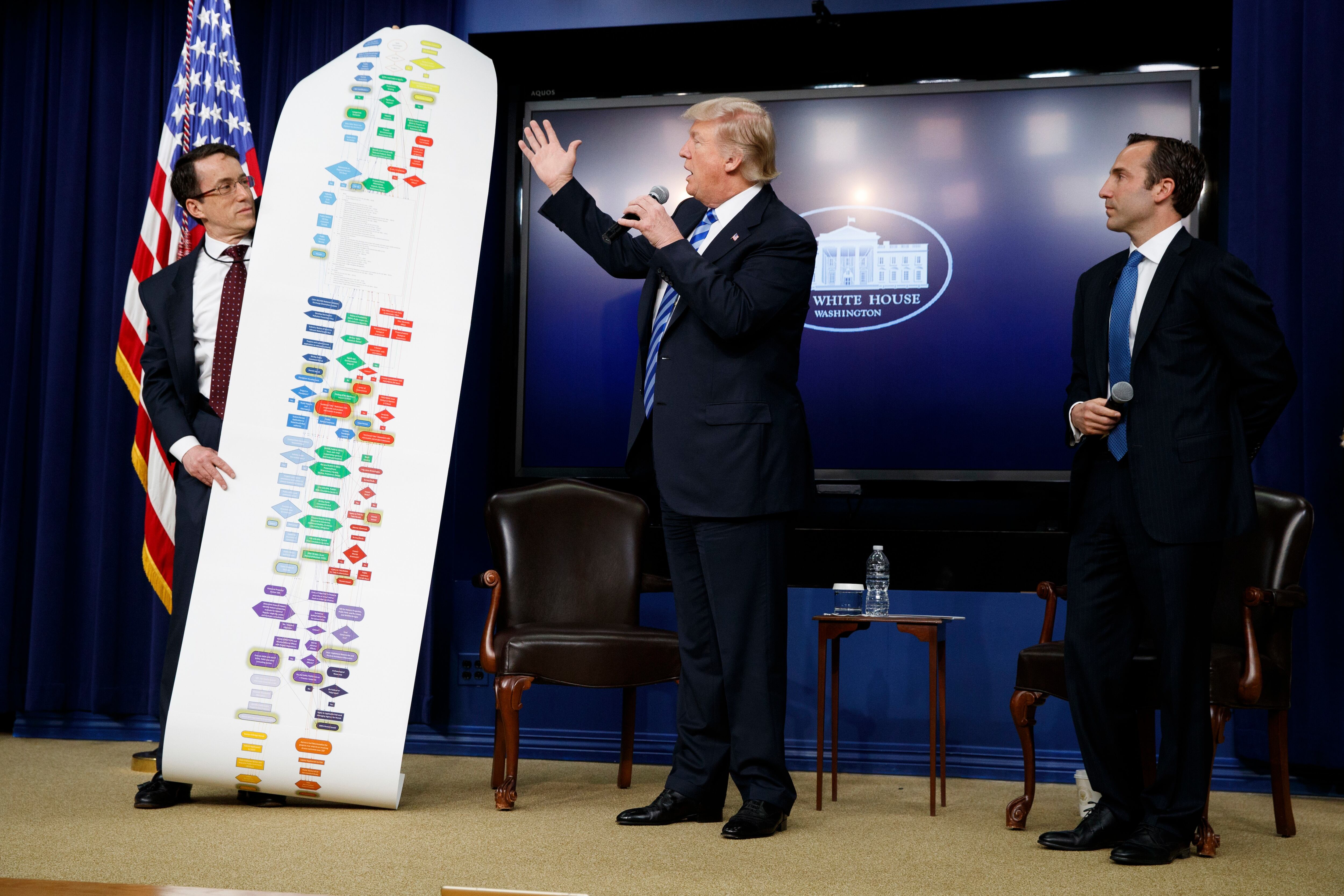President Donald Trump signed an executive order presidentially mandating the authority of agency chief information officers, the White House announced May 15, 2018.
“We’re embracing big change, bold thinking, and outsider perspectives to transform government and make it the way it should be, and at far less cost,” said Trump in a statement on the order.
Titled the Executive Order on Enhancing CIO Authorities, the new presidential action makes CIOs the senior-most technical adviser at an agency, gives them a seat at the senior management table and the hiring authority to fill needed technical positions more easily, and prioritizes shared services across the government.
“The organizational structure of the federal government has been at least 20 years out of date in this area, so it’s not surprising that our technical infrastructure has been at least 10 or 20 years out of date,” a senior administration official said on a press call about the order.
“For something that is too often relegated to the back office, this is a significant organizational change that is coming from the presidential level.”
RELATED

Though this is not the first time government leadership has tried to push the CIO role into greater prominence — think the mandated appointment of CIOs in the Clinger-Cohen Act of 1996 and the measurement of CIO authorities in the Federal Information Technology Acquisition Reform Act of 2014 — senior administration officials said that this executive order adds presidential weight to a longstanding issue.
“There are aspects of what we are doing today that were in Clinger-Cohen that were never implemented, that were in FITARA and were never implemented,” said a senior administration official.
“I think a lot of the efforts of the past have been either response to crisis, so one-off solutions, or in pursuit of mostly shiny objects — things that are important but that ultimately don’t deal with the root causes.”
The administration official also said that agencies who have complied with FITARA requirements without the push of an executive order are already in a demonstrably better posture with their IT systems, proving the need for extra pressure on agency CIO authorities.
“One of FITARA’s foremost goals is to enhance the duties of agency chief information officers to ensure better management and coordination of IT investments. Since FITARA was enacted, my colleagues on the Oversight and Government Reform and I have held semiannual hearings to track agency implementation of the law. We have consistently found that agencies were hesitant to have CIOs report to the Secretary or Deputy Secretary of the agency, that agency CIOs did not have adequate visibility into their agency’s IT budgets, and were often not adequately involved in the management and governance of IT investments until critical problems arose,” said Rep. Gerry Connolly, D-Va., a central legislator in FITARA’s enactment, in a statement on the executive order.
“This executive order builds on the foundation established in FITARA, addresses vacancies in federal IT sector that hinder agency IT efforts, and sets a path for better management of IT acquisition.”
The official added that the White House will still need support from Congress to accomplish what the executive order lays out.
The Department of Defense, which has historically done poorly on FITARA scorecards, was exempt from the order due to its unique organizational structure.
“It is disappointing that the Department of Defense is not covered under this executive order as it is the one agency that consistently receives a failing grade on the FITARA scorecard,” said Connolly. “I urge the Department to take a good look at executive order and FITARA as guidance of the Department’s own IT acquisition and management.”
The order also requires agencies to have a single CIO with those authorities, instead of the multiple CIOs some agencies currently have. The Department of Agriculture serves as an example of this simplification, according to the official, as they recently went from 24 different CIOs to one.
The order has already drawn public sector support for adding force behind a frequently raised government issue.
“ITI welcomes the administration’s continued focused on IT modernization. Strong leadership and executive support are needed to evolve and transform the way the government invests in IT,” said Trey Hodgkins, ITI’s senior vice president for public sector.
“The executive order from the Trump administration announced today puts CIOs in a position to effectively drive this IT modernization across the federal government and fully implement the Clinger-Cohen Act and the FITARA Act.”
According to the administration official, this order is part of a larger White House strategy to tackle the chronic problem of inefficient and outdated IT in the federal government.
Jessie Bur covers federal IT and management.
In Other News



